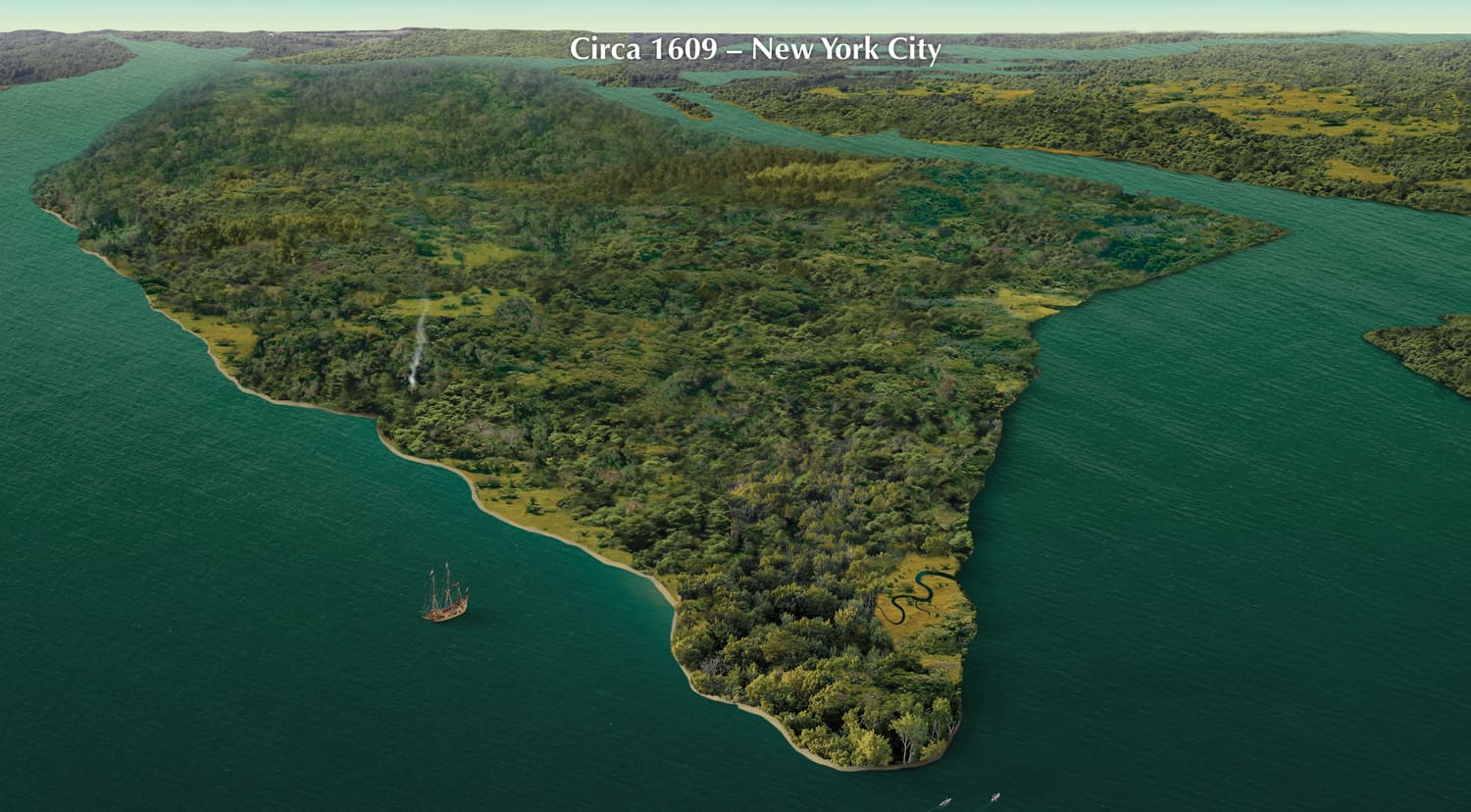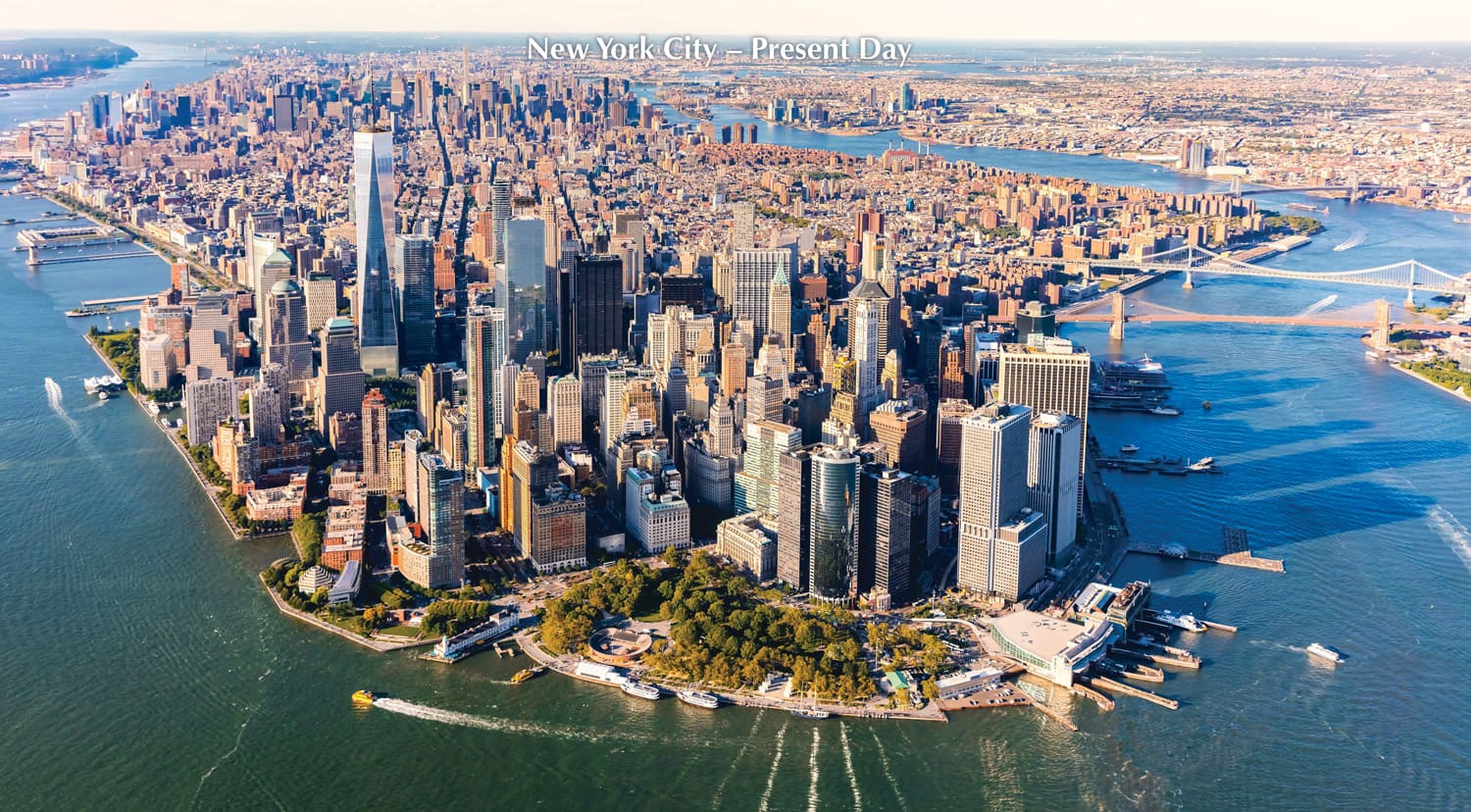
History of The Empire State Building: Architectural Masterpiece Captured in Stunning Photographs in Pictures
The Empire State Building is an iconic 102-story art deco skyscraper located in Midtown Manhattan, New York City. It was completed in 1931 and has since become one of the most recognizable landmarks in the world. The building’s origin can be traced back to the 1920s, when a group of investors led by John J. Raskob and Alfred E. Smith decided to construct the tallest building in the world on the site of the old Waldorf-Astoria Hotel.
The Empire State Building stands at 1,454 feet (443.2 meters) tall, and was the tallest building in the world until the completion of the World Trade Center in 1971. It has 102 floors, and was constructed using a steel frame clad in limestone and granite. The building was designed by architect William F. Lamb of the architectural firm Shreve, Lamb and Harmon, and its construction was completed in just over a year. At the time of its construction, the Empire State Building was considered a marvel of modern engineering, and it remains a symbol of New York City’s engineering prowess to this day.
The impact of the Empire State Building on the New York City skyline cannot be overstated. From its position on Fifth Avenue, the building dominates the surrounding landscape, and is visible from many points throughout the city. The building’s Art Deco design and elegant lines are a testament to the optimism and energy of the early 20th century, and it has been featured in countless films, television shows, and other media. Today, the Empire State Building remains one of the most popular tourist attractions in New York City, with millions of visitors coming to see its breathtaking views and iconic design every year.

1931: Constructing The Empire State Building: A Historic Lewis Hine's Snapshot
Explore Lewis Hine's 1931 photo capturing workers on the Empire State Building, a symbol of American resilience
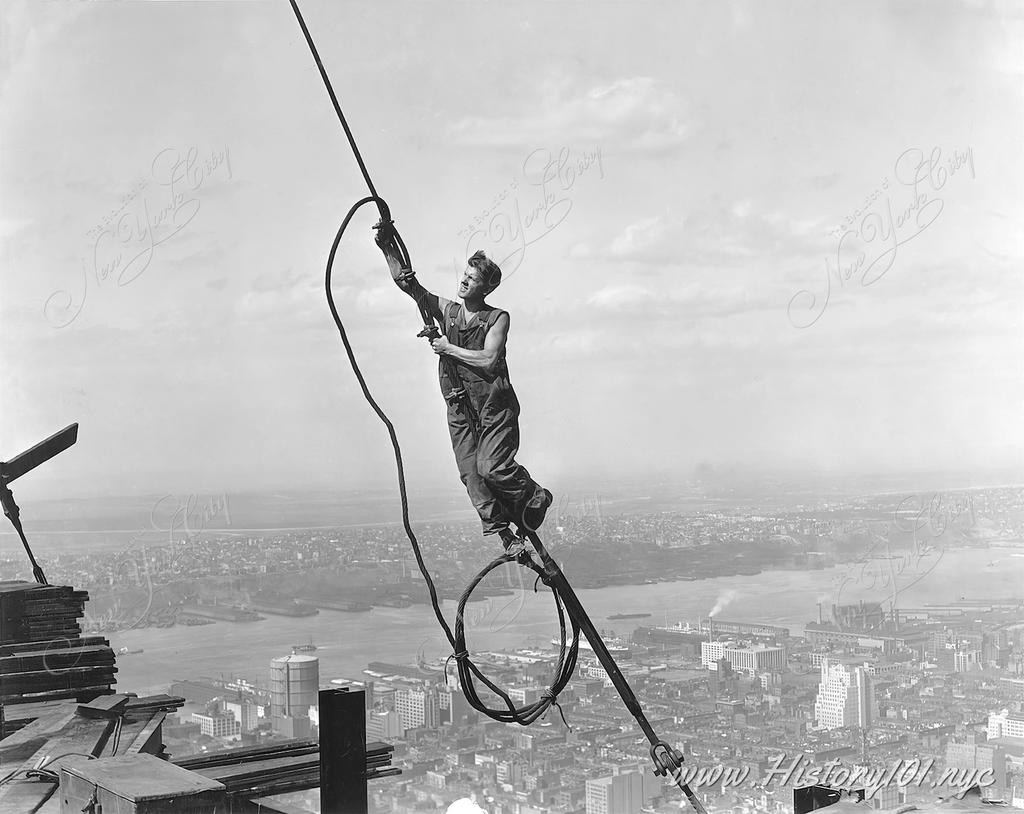
1931: Empire State's Icarus: Lewis Hine's Homage to Sky-High Bravery
Unveil the story behind 'Icarus,' Hine's photo that immortalizes the courage of Empire State builders in 1930's New York

1931: Worker at the Edge of Empire State Platform
Aerial photograph of a lone construction worker working on the steel structure of the Empire State Building.
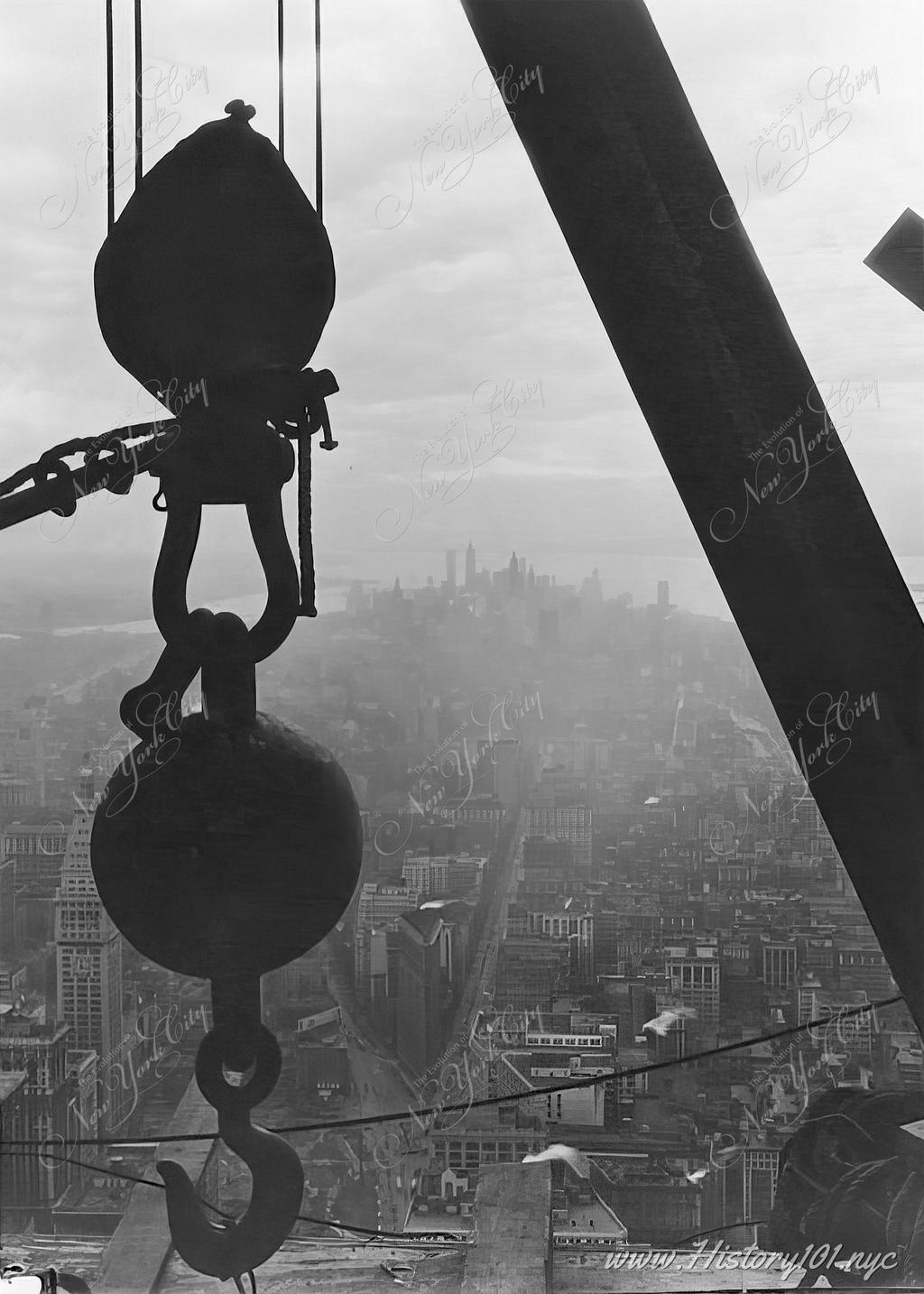
1931: Crane Hook and Skyline Looking South from Empire State Building
Aerial photograph taken from inside the growing structure of the Empire State Building. An epic view of downtown Manhattan is framed by the silhouette of a massive crane hook and steel beam.
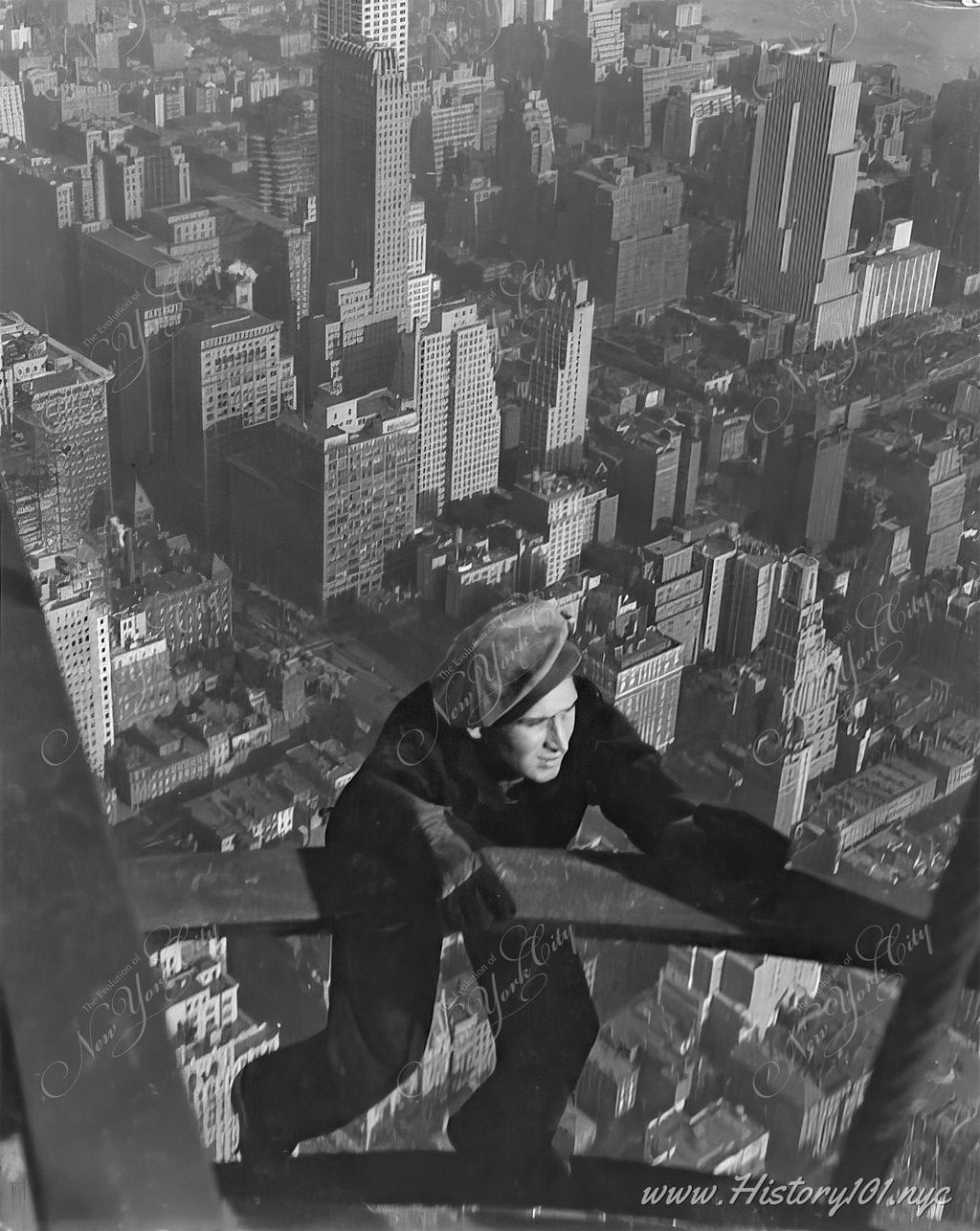
1931: Empire State Worker Hanging on to Two Steel Beams
A work clings to the steel framing of the future Empire State Building with a bird's eye view of Midtown Manhattan, many stories below him.
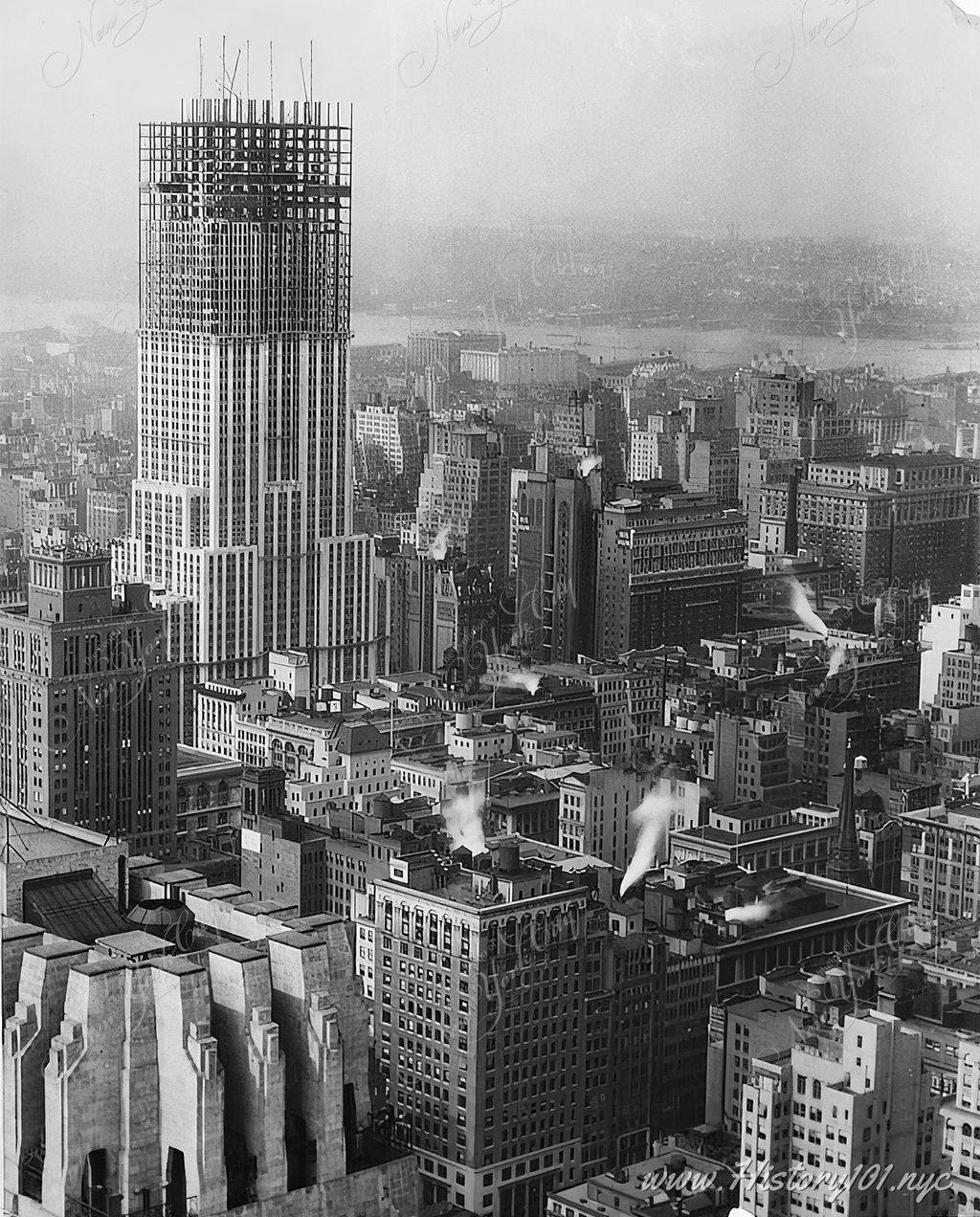
1931: Empire State Building Almost Complete
Bird's eye view of midtown Manhattan and the Empire State Building, about 75% complete with half of its steel structure visible.
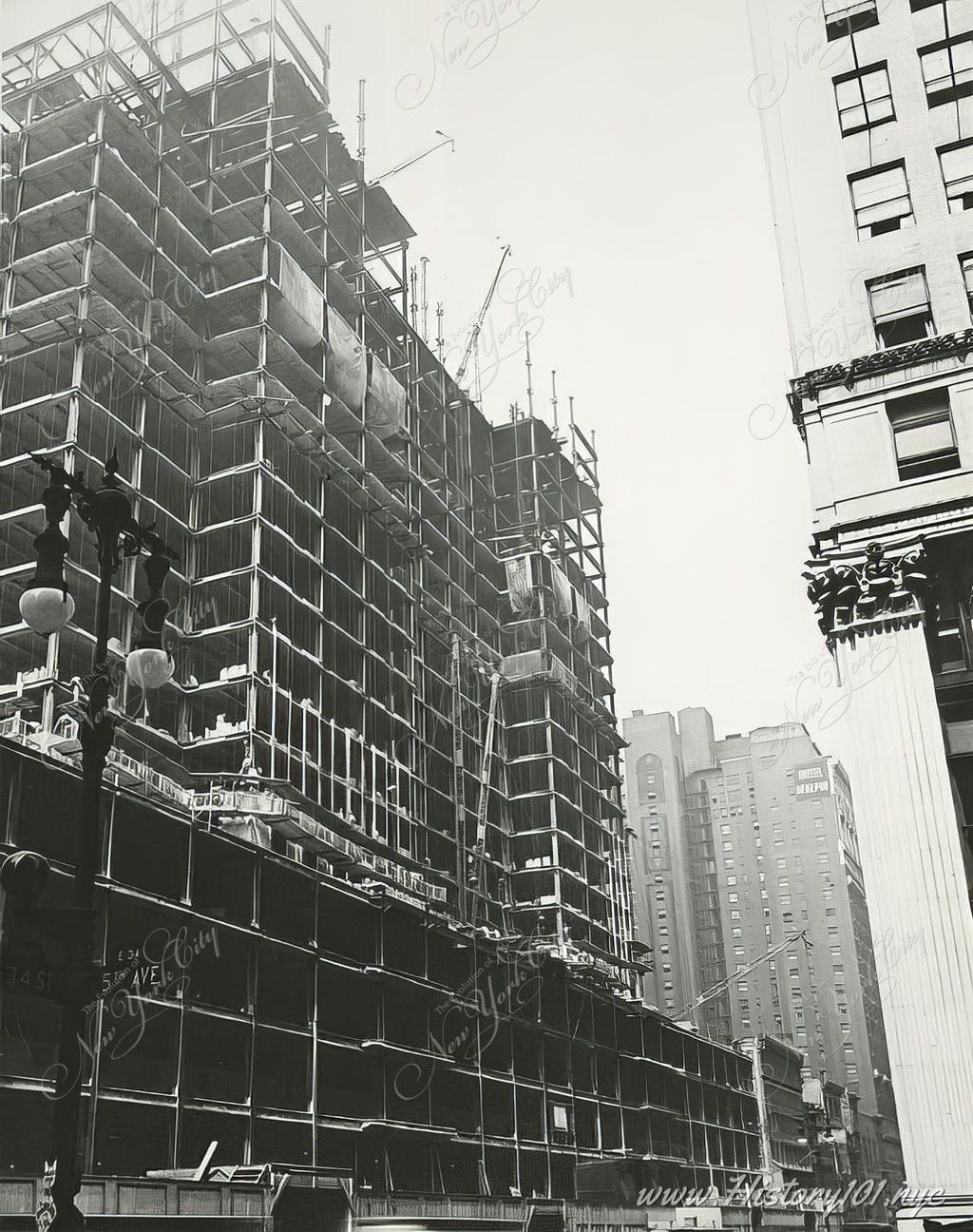
1931: View of Empire State Construction from 34th Street
The first twenty floors of the Empire State Building are being constructed. There is no visible facade yet, only the steel beam structure and scaffolding of construction workers.
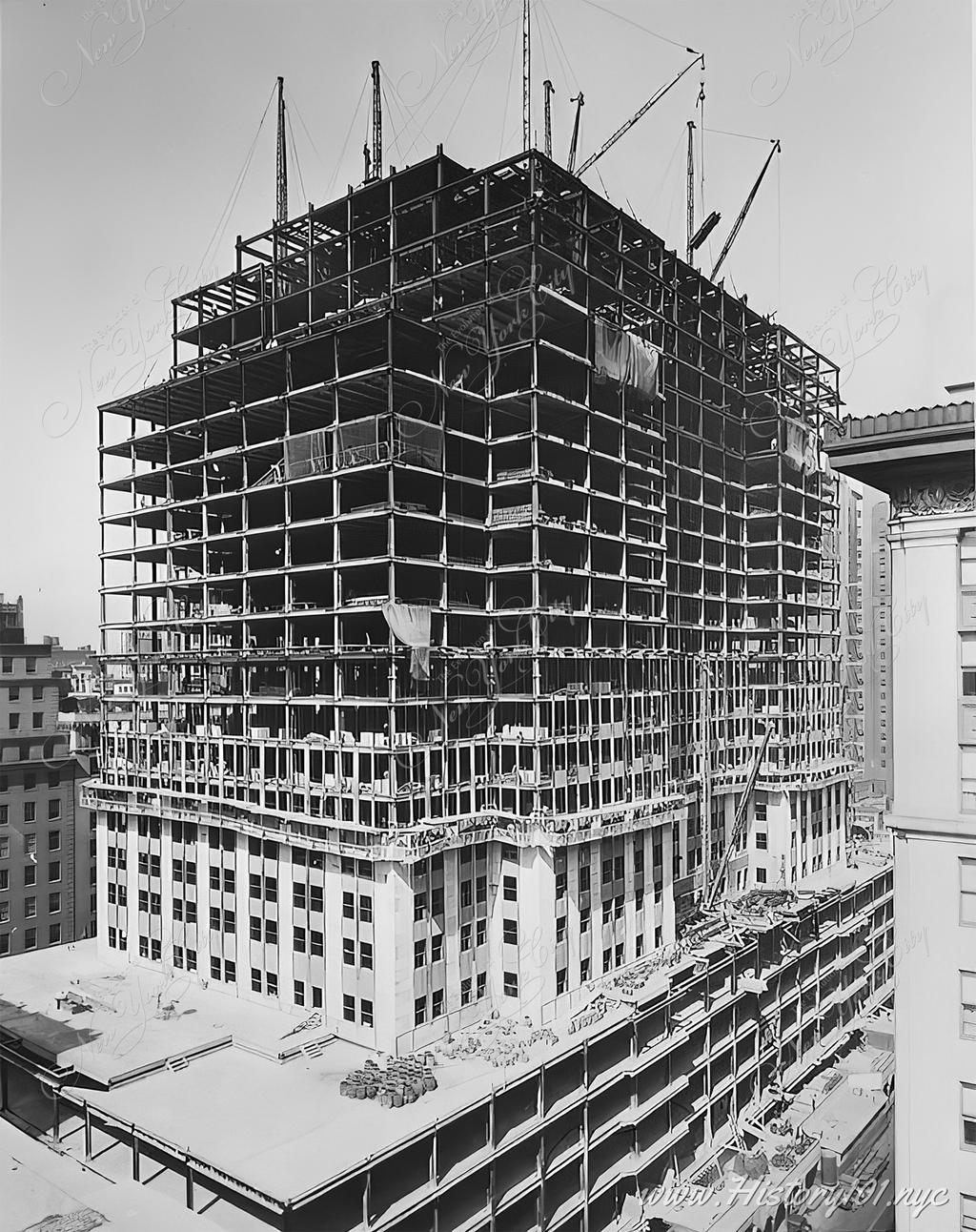
1931: Facade Construction Begins on Empire State Building
The Empire State Building's ground floors are clad in Indiana limestone panels, sourced from the Empire Mill in Sanders, Indiana, which give the building its signature blonde color.
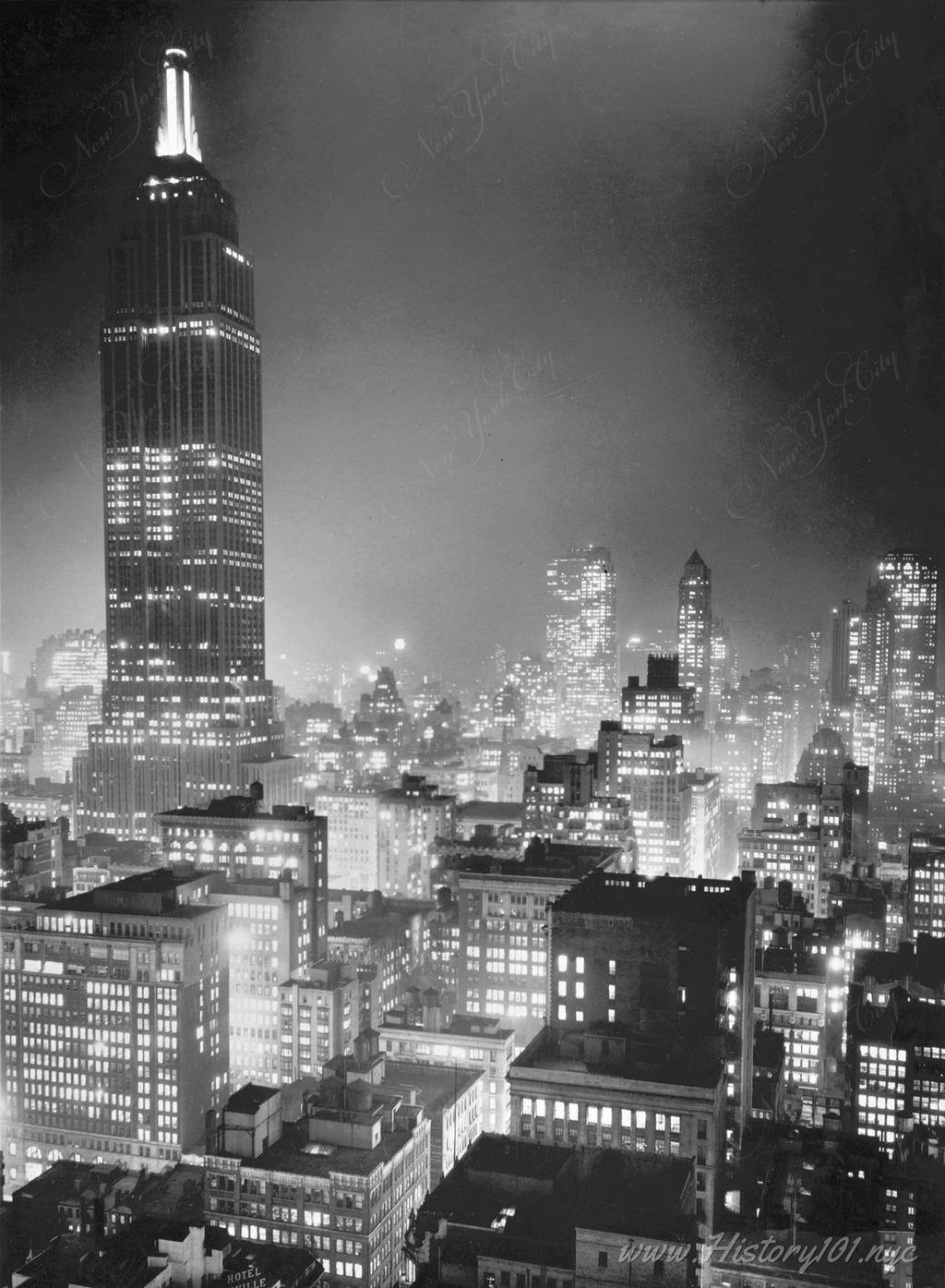
1937: Empire State Building at Night
Photograph of the Empire State Building and surrounding skyscrapers illuminated at night.
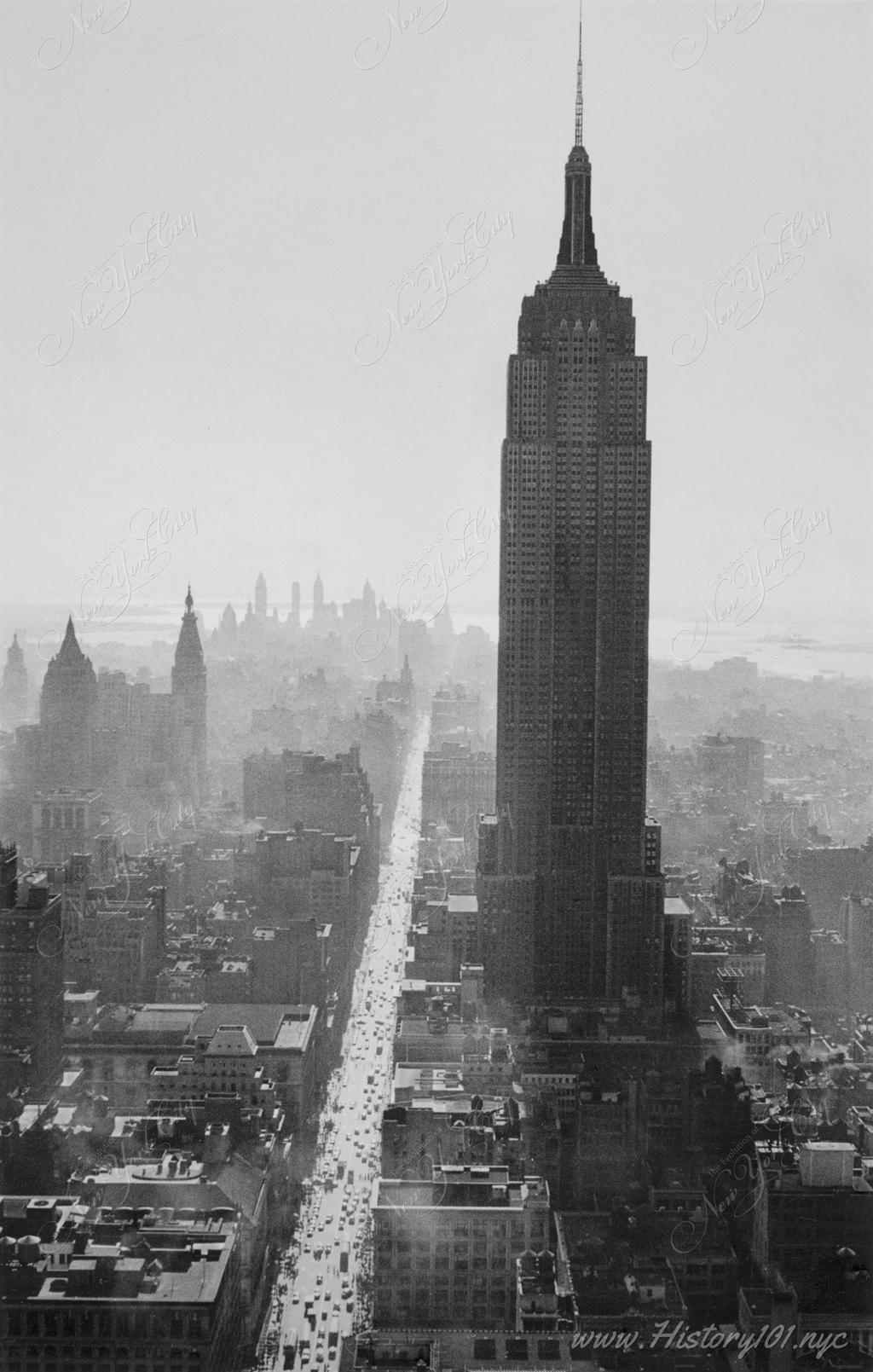
1952: Empire State Building Aerial View: Historical Midtown Manhattan
Explore a 1952 aerial photograph of the Empire State Building and Midtown Manhattan’s evolving skyline
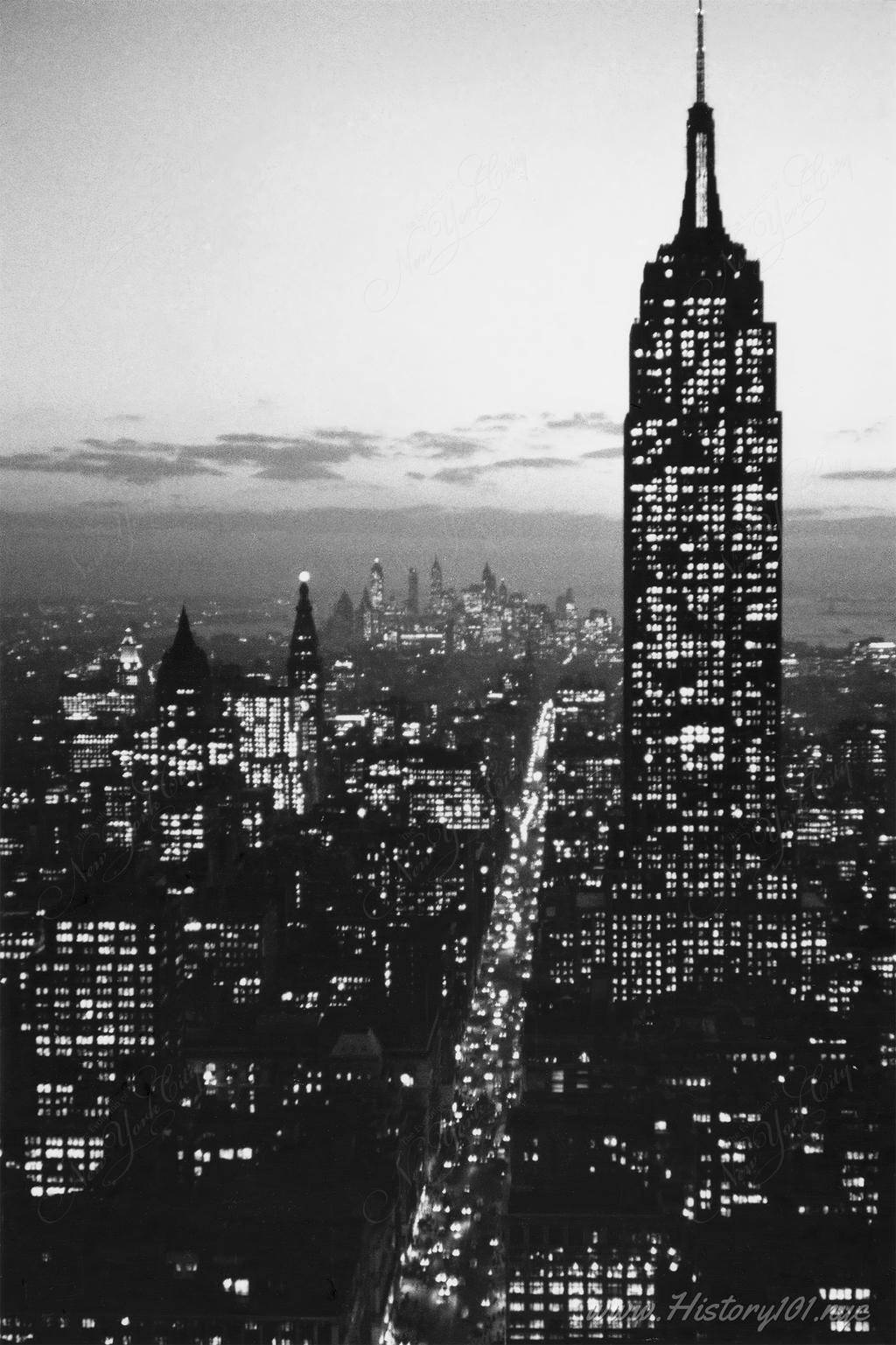
1953: Empire State Building at Night
Aerial photograph of the Empire State Building illuminated at night.
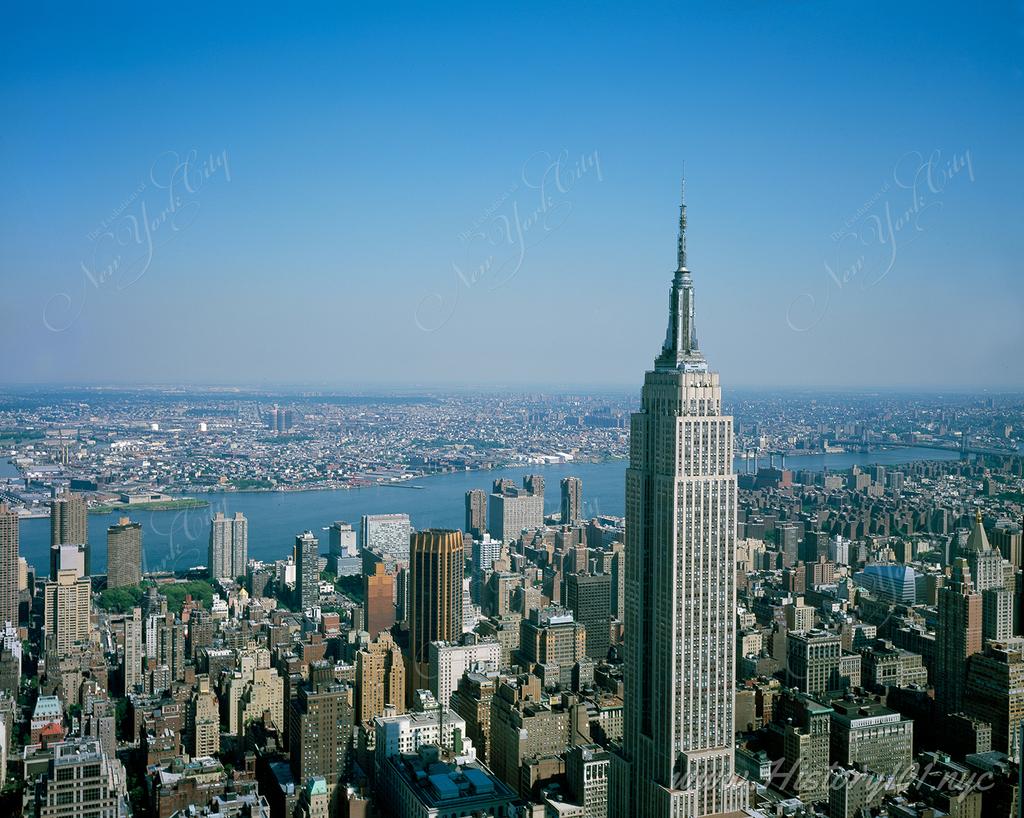
1984: Empire State Building and New York's Skyline
Aerial photograph of the Empire State Building and Manhattan's skyline with Queens and Brooklyn visible in the background.
In the early 1600s, the land where the Empire State Building now stands was a rural expanse, part of a larger tract of land known as “Noortwyck” or “Northwick” in Dutch New Amsterdam. At the time, the area consisted of rolling hills, forests, and marshlands, inhabited by the indigenous Lenape people and teeming with wildlife. European settlers eventually developed the land for agricultural purposes, but the transformation of the area into the bustling cityscape we know today was still centuries away. The site’s journey from farmland to iconic landmark began in the late 19th century when New York City underwent rapid industrialization and urbanization. The parcel of land at the corner of Fifth Avenue and 34th Street transitioned from residential to commercial use with the construction of the original Waldorf-Astoria Hotel in 1893. This luxurious hotel, which occupied the site until 1929, was a symbol of Manhattan’s Gilded Age, attracting the city’s elite and setting the stage for the monumental structure that would follow.
The Empire State Building’s construction was spurred by a fierce rivalry between two prominent businessmen, Walter Chrysler of the Chrysler Corporation and John Jakob Raskob, a financier and former executive of General Motors. As they sought to outdo each other by erecting the world’s tallest building, Raskob assembled a team of visionaries to bring his ambitious project to fruition. Architect William F. Lamb, from the firm Shreve, Lamb & Harmon, was tasked with designing the building, while the Starrett Brothers and Eken construction company were responsible for its construction.
On March 17, 1930, demolition of the Waldorf-Astoria Hotel began, clearing the way for the Empire State Building’s construction. Remarkably, the building’s construction took just 13 months, with workers completing an average of 4.5 stories per week. This incredible pace can be attributed to the efficiency and skill of the workforce, as well as the use of prefabricated steel components, which expedited the assembly process. In total, over 3,400 laborers contributed to the construction of the building. The Empire State Building officially opened on May 1, 1931, with a grand ceremony presided over by President Herbert Hoover and New York Governor Franklin D. Roosevelt.
Throughout its storied history, the Empire State Building has also played a prominent role in popular culture. The building has been featured in countless films, television shows, and books, often serving as a backdrop for pivotal scenes or as a symbol of the city itself. From its unforgettable appearance in the 1933 film “King Kong” to its annual role in the New York City skyline during the Macy’s Thanksgiving Day Parade, the Empire State Building has become an enduring fixture in the cultural imagination. The Empire State Building’s legacy extends far beyond its impressive architecture and height. As a symbol of innovation, determination, and the American Dream, the building stands as a testament to the indomitable spirit of New York City and its people. From the early days of Dutch settlement to its present-day role as a global icon, the history of the Empire State Building reflects the ever-evolving story of the city it calls home.
In conclusion, the Empire State Building’s rich history is a captivating tale of ambition, innovation, and triumph. From its origins on a tract of land in the Dutch settlement of New Amsterdam to its completion as the world’s tallest building during the Great Depression, the Empire State Building has stood as a monument to the resilience and ingenuity of the human spirit. Today, it remains an enduring symbol of New York City’s architectural and cultural heritage, captivating the hearts and imaginations of millions who pass through its doors or gaze upon its majestic silhouette.
Timeline of Events for The Empire State Building: Architectural Masterpiece Captured in Stunning Photographs , New York City
1. The Empire State Building iconic Art Deco design was created by the architectural firm Shreve, Lamb & Harmon, with William F. Lamb serving as the chief architect.
2. The groundbreaking for The Empire State Building commenced on March 17, 1930 and was completed in just 410 days, or roughly 13 months, an impressive feat for a building of its size and complexity.
3. Over 3,400 workers were employed during the construction process of The Empire State Building and these workers included laborers, steelworkers, masons, and many other skilled tradespeople.
4. Over 57,000 tons of steel were used in the construction of the Empire State Building. The building's steel framework was essential to support its immense height and weight.
5. The building stands at 1,454 feet (443.2 meters) tall, including its iconic spire. When it was completed in 1931, it was the tallest building in the world.
6. It has 102 floors, with the best views from its 86th Floor (1,050 feet) to the 102nd Floor (1,250 feet) Observatory.
7. The 102nd-floor observatory was originally intended to be a docking station for airships, also known as dirigibles.
8. It has a total of 6,514 windows. This large number of windows is characteristic of its Art Deco architectural style, which emphasizes vertical lines.
9. It has a total of 73 elevators, including service elevators. These elevators efficiently transport people and goods throughout the building's 102 floors.
10. The observation deck is visited by over 4 million people each year. Located on the 86th floor, offers stunning 360-degree views of New York City and beyond.
11. The Empire State Building Run-Up is an annual race (first Run-Up was held in 1978) from the lobby up the 1,576 steps to the 86th-floor observation deck.
12. It was designated a National Historic Landmark in 1986, as an iconic symbol of New York City and the United States.
13. The Building's exterior is made of Indiana limestone that gives the building its light-colored appearance, while the granite provides a strong and durable foundation.
14. It has its own post office on the second floor. This post office provides mailing services for the building's tenants and visitors to the iconic skyscraper.
15. It has appeared on numerous postage stamps, solidifying its status as a cultural landmark and symbol of American progress.
16. It was initially intended to have a flat roof, but the spire was added to compete with the height of the Chrysler Building.
17. Al Smith, a former Governor of New York and the building's first president, was instrumental in the building's construction.
18. It is said that The Empire State Building's construction used enough concrete to build a sidewalk from New York City to Washington, D.C.
19. It has a 103rd-floor balcony that is not open to the public but is occasionally used for special events and promotions.
20. It was the site of a "gorilla wedding" in 1983, when two gorillas from the Bronx Zoo were "married" on the building's observation deck.
21. In 2016, the Empire State Building's observation deck was used as the finish line for the television show "The Amazing Race."
22. Its lighting system can display over 16 million colors, providing a vast array of options for special lighting displays.
23. It hosts an annual "Lights Out" event, in which the building's exterior lights are turned off to raise awareness for energy conservation and climate change.
24. It was one of the first commercial buildings to use air rights, selling the unused air rights above the building to adjacent properties.
25. The Empire State Building has a long-standing rivalry with the nearby Chrysler Building, both vying for the title of New York City's most iconic skyscraper.
